Excerpts from Jim Conrad's
Naturalist Newsletter
entry from field notes dated April 17, 2022, taken in disturbed/reforesting borderline cloudforest within 1km of Valle de los Fantasmas, elevation ±2,320m (7600 ft), with limestone bedrock; about 40kms (24 miles), straight-line, ESE of San Luis Potosí, San Luis Potosí state, MÉXICO, (N22.06°, W100.62°)
ONIONWEED, DRIED-UP
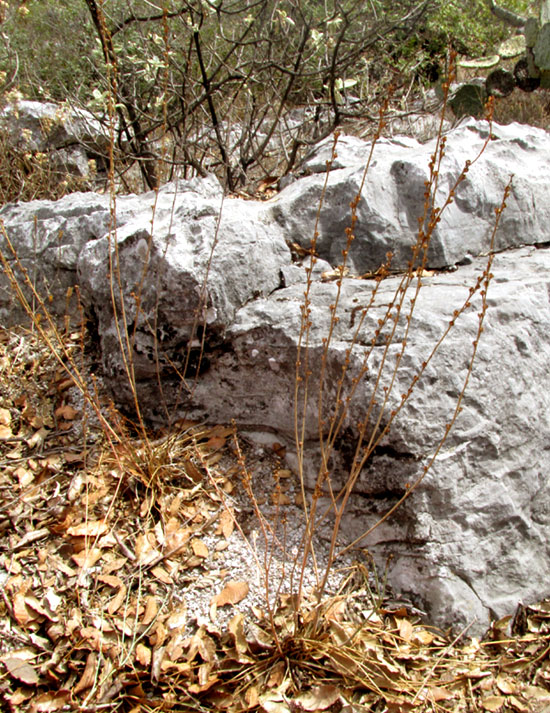
In thin soil among limestone boulders beside the main highway, the above plant was so dried-up and desolate looking that at first I ignored it, knowing I'd never be able to identify it with just the empty capsular-type fruit remains shown below:
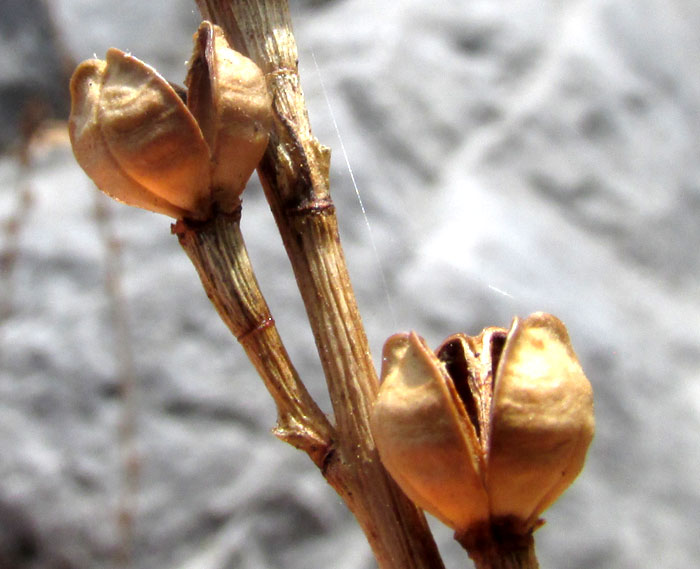
The capsules split into three compartments, which suggests that the plant is a monocot, like grasses, lilies and orchids. Among dicots, which most other flowering plants are, divisions normally are in 4s, 5s or multiples of those numbers. The stems, or pedicels, below the capsules are curiously jointed. But, what monocot looks like this plant? Then I saw it: A single flower so small that even though it's in the center of the above picture, you can't really see it. That's it below:
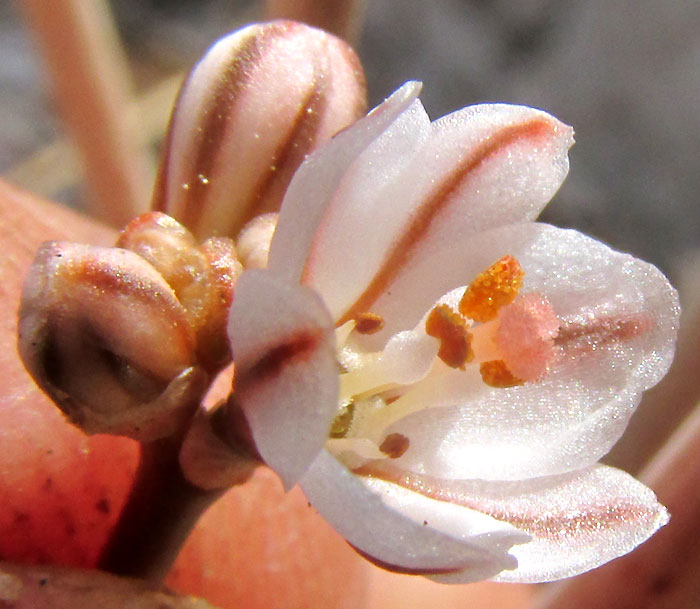
The surprising thing is that it bears three stamens, the flat, pollen-covered faces of the large, golden-colored anthers of which face inward toward the white, cauliflower-like stigma. Also, at the base of the stamens and alternating with them, are three much smaller, apparently sterile, stamen-like items called staminodes. Plus note that at the point of the anther's attachment with the white filament, the filament greatly swells, something I don't recall seeing. A side view of the flower is shown below:
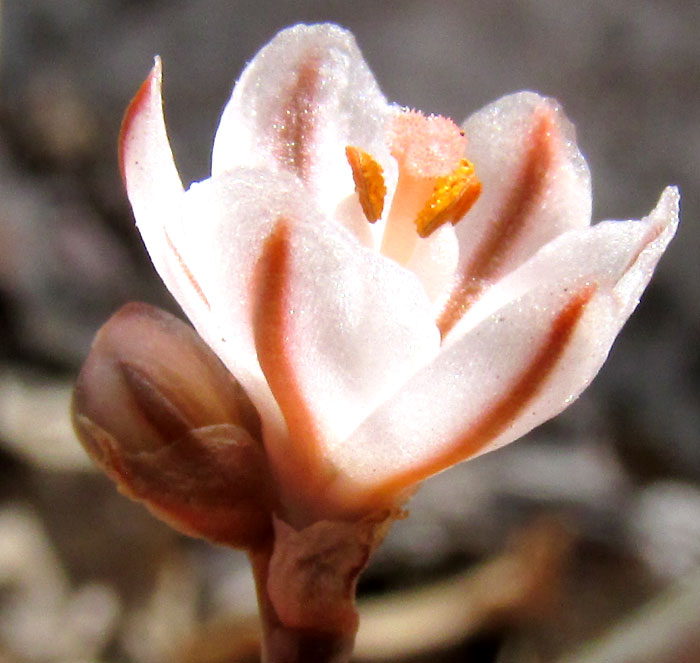
Instead of the average flower's green, bowl-like calyx below a colorful corolla, this flower consists of 6 "tepals" all looking like petals. The word tepals is used when the distinction between calyx lobes or sepals, and a corolla's petals isn't clear. Below the tepals are two overlapping, scale-like, papery bracts, which are modified leaves.
Below the branched inflorescence, tough stems arose from among a rosette of leaves so dried out and curled up they looked like dead pine needles, shown below:
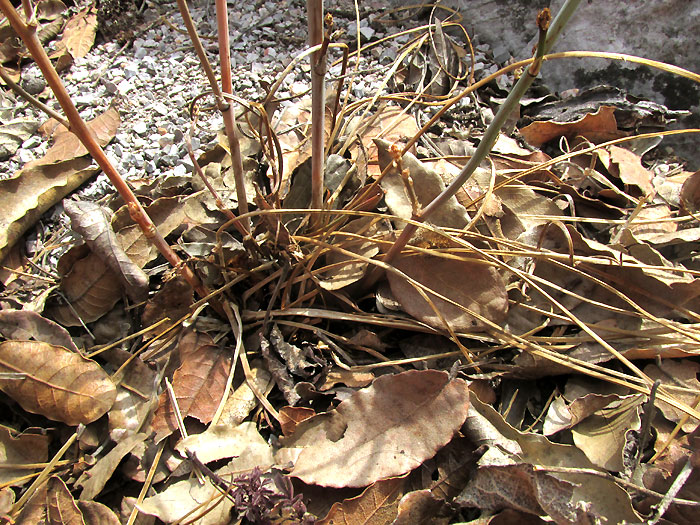
I had problems even assigning this plant to its family. However, once it was finally figured out, at least I learned that botanists from the beginning didn't know exactly what to do with it. The plant goes by several English names, but the most commonly employed one seems to be Onionweed. It's ASPHODELUS FISTULOSUS, a relatively recently introduced weed here in Mexico, but quickly spreading throughout the central highlands. It's a native to the Mediterranean region of southern Europe and northern Africa, but now has become invasive throughout the world wherever the climate comes near that of the Mediterranean area, and that includes the arid southwestern US.
In 1753, Linnaeus himself named the plant, but assigned it to the Lily Family. Later a new family was constructed around it, and today it's placed in the Asphodelus Family, the Asphodelaceae, which a lot of American botanists have never heard of. However, new information from gene sequencing has caused many to transfer to this family plants not looking much like our Onionweed, including Aloe Vera and daylilies (Hemerocallis).
In Mexico traditional uses of the plant aren't known because it's such a recent arrival. In northern Africa it's been applied externally to skin sores and inflamed parts of the body. The seeds contain oils rich in linoleic acid, of value in preventing atherosclerosis. Also its fingerlike rhizomes have been cooked as a vegetable.